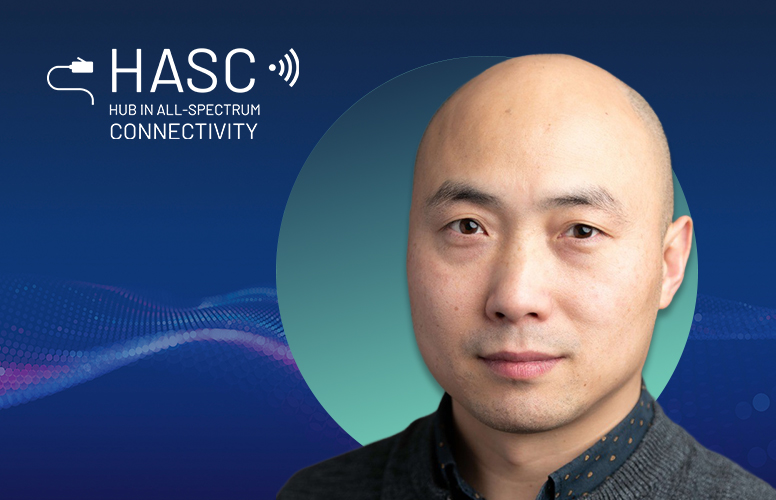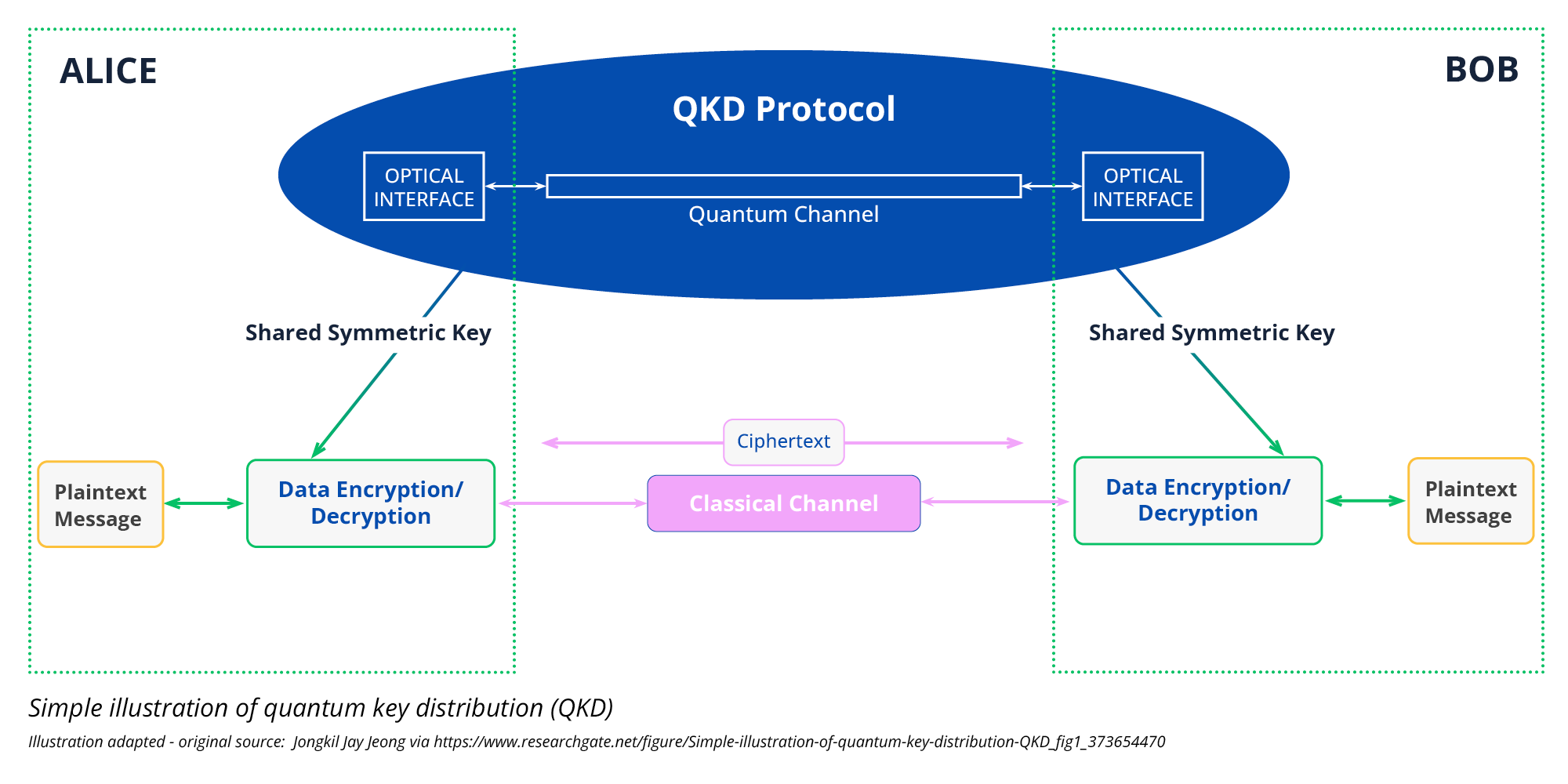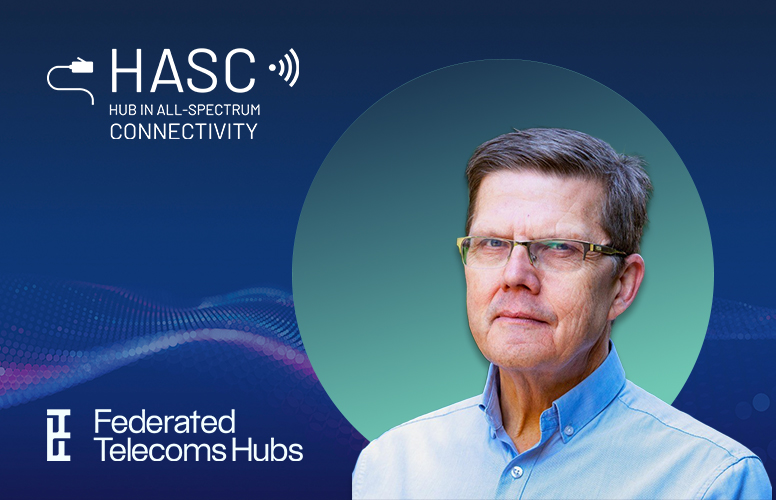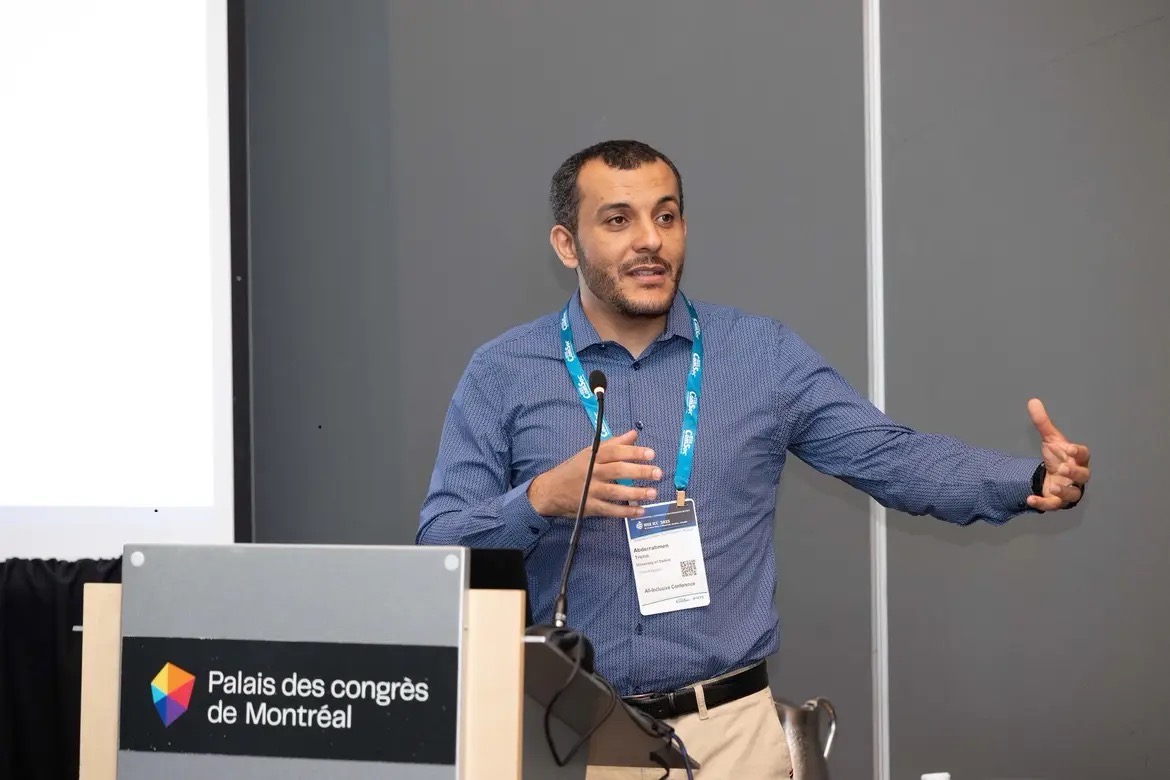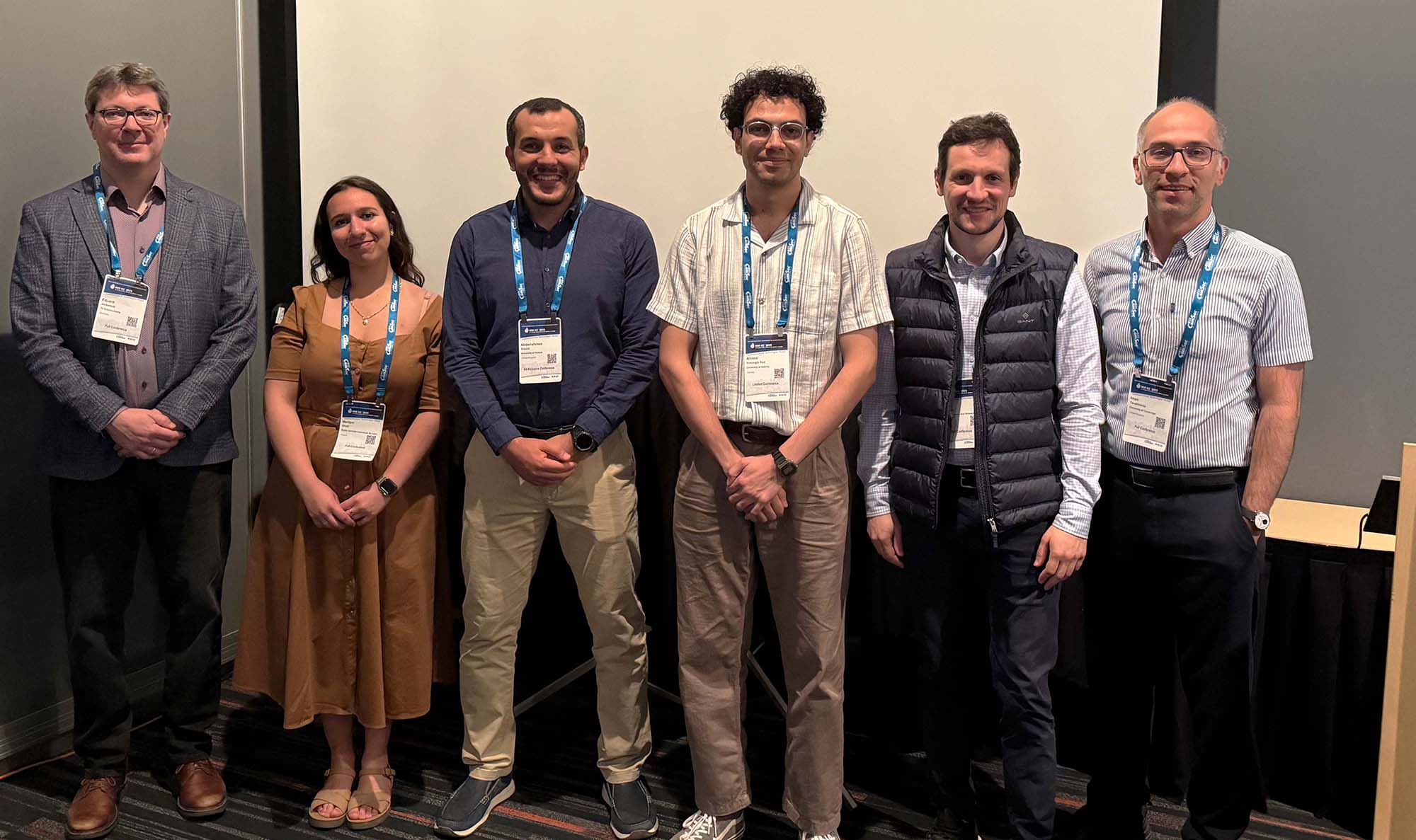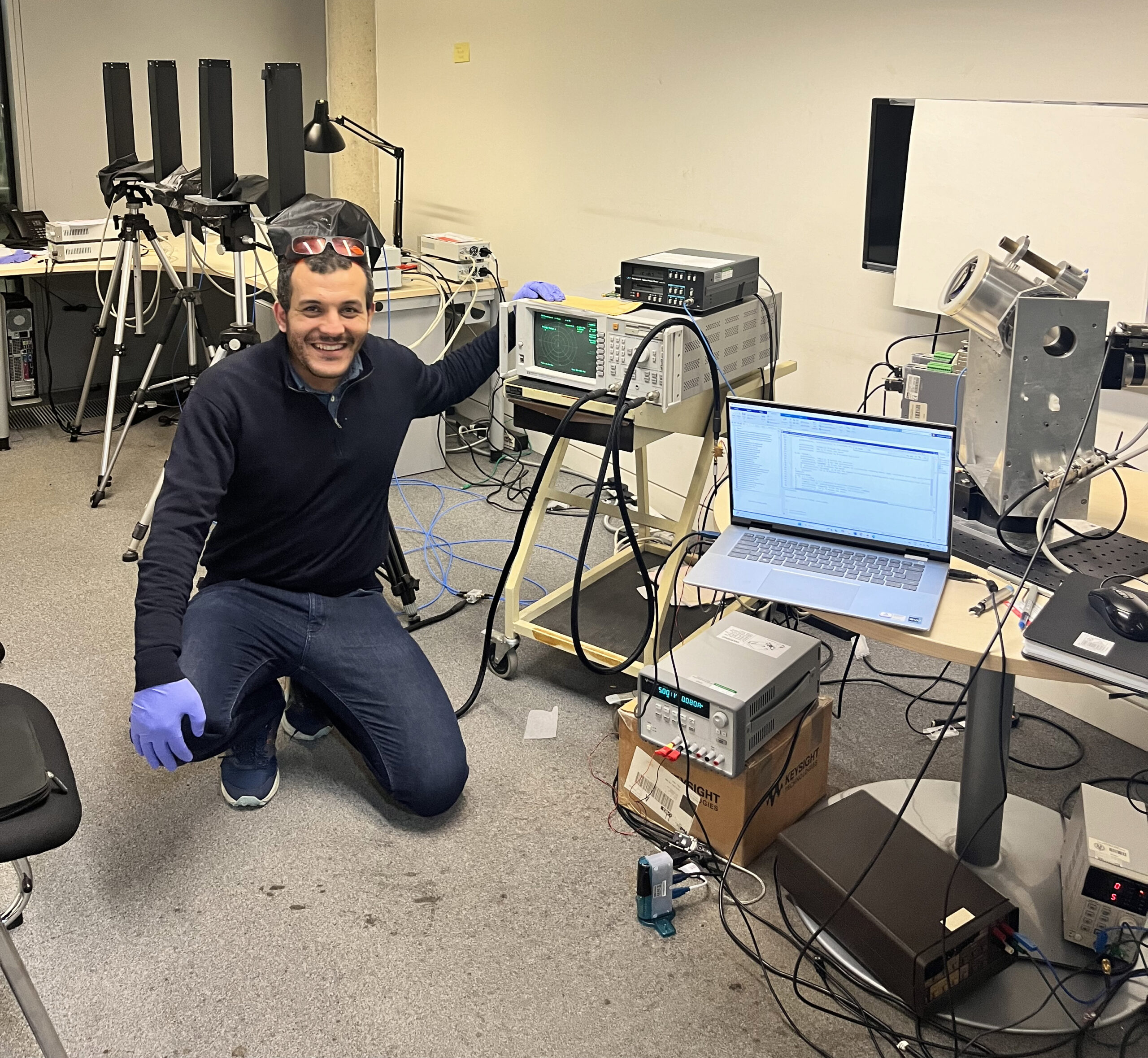“International collaboration is essential in telecoms innovation because future communication networks are inherently global.”
The Federated Telecoms Hubs hosted a UK-Taiwan 6G joint workshop back in May of this year. This invitation-only event provided an opportunity for telecoms companies and researchers from Taiwan to come and explore opportunities and to collaborate on advanced communications and innovation. They met with academics from across the hubs, HASC, CHEDDAR and TITAN as well as other SMEs and representatives from UK industry.
The aim of the event was to help foster new relationships between the two countries and focused on not only the current status of research and experimentation but also future opportunities including 6G infrastructure and its growing capabilities.
Professor Dr. Shuangyi Yan Discusses International Collaboration in Telecoms
One of the delegates from the HASC project was Dr. Shuangyi Yan (Bristol, Smart Internet Lab) who presented alongside Professor Bruno Clerckx (Professor of Wireless Communications and Signal Processing at Imperial College London). The presentation covered their R&D and collaboration interests in the areas of AI, Machine learning, and network, automation and optimisation.
After the event, we took the time to reflect on the positive impact this and similar events have on international collaboration and what this enables for the telecoms industry and researchers alike.
You can watch the interview we conducted with Dr Shuangyi Yan and read the highlights from the discussion below where Dr. Yan shares with us why he believes international collaboration is so important in his field of research.
About Dr. Shuangyi Yan, BEng, PhD
Dr. Shuangyi Yan is a Senior Lecturer in High Performance Networking & Optical Networking at the School of Electrical, Electronic and Mechanical Engineering
Dr. Yan’s work explores future dynamic optical networks that are flexible, reconfigurable, and intelligent. These programmable networks aim to deliver services on demand, using just-enough hardware to maximise efficiency. Two main areas support this vision: AI-driven optical networks and programmable multi-dimensional networks. Using an SDN-based monitoring framework, AI enables smarter network functions. In parallel, he is helping to develop reconfigurable architectures and optical hardware which include architecture-on-demand nodes and bandwidth-programmable transmitters. By integrating TDM (time), WDM (wavelength), and SDM (space) technologies, this research advances a highly adaptable and efficient optical transport system.
International Collaboration in Telecoms – Interview Summary
The following is a summary of our Q&A with Dr. Yan. Please note: the content below has been paraphrased and summarised for clarity. For the full conversation, please refer to the video or transcript provided.
Why is international collaboration important in innovating telecoms?
Dr Yan tells us that, “international collaboration is essential in telecoms innovation because future communication networks are inherently global.”
He continues by telling us, that working across borders allows researchers to combine complementary expertise, leading to higher scientific and industrial impact. In this case, integrating optical front-haul networks with the Open RAN ecosystem demands close cooperation between wireless and optical technologies, as well as between academia and industry. Such synergy simply isn’t possible without international collaboration, which reinforces understanding and drives meaningful, large-scale advancements.
During the event, what kind of conversations were you having?
“I had some really interesting conversations with researchers and industry partners from across Europe and Asia. What stood out was our shared commitment to building the next-generation network infrastructure. Unlike past incremental improvements, we now need a dramatic shift to meet the demands of emerging technologies like large language models (LLMs). It was encouraging to see a common vision and diverse perspectives coming together. The event also reinforced how important cross-disciplinary collaboration is, and that we need more spaces like this to work together effectively.”
What opportunities or challenges came up during the discussions?
“One key opportunity highlighted was the integration of sensing technologies from both wireless and fibre networks. This cross-domain approach could improve network management and enable broader sensing services for users. By combining data from multiple sources, it becomes possible to detect insights that aren’t visible from a single domain alone. This fusion of data opens up exciting applications, particularly for environmental monitoring, and reinforces the value of collaboration across different technologies and sectors.”
How might international collaboration influence your research?
International collaboration is already central to Shuangyi’s work and with his team made up of researchers from many backgrounds. He explains that it is this diversity that brings a range of perspectives. This helps the team to approach challenges in a more dynamic and innovative way.
Within the HASC project, this collaboration enables a unified approach to complex problems, and combines interests across different focus areas, including end-to-end optical and wireless technologies. Shuangyi believes this broad context is essential for addressing future challenges, as it allows for richer understanding and more effective and wide-ranging solutions.
Where do you see the most potential for future international partnerships?
Shuangyi told us, he sees great potential for future international partnerships in applying AI to network control and management, especially when combined with emerging hardware technologies.
Within the HASC project, his research focuses on this area, addressing the challenges posed by large language models while also exploring how AI can enhance efficiency. By enabling greater automation and reducing reliance on expert intervention, AI can help create a more intelligent and responsive network infrastructure.
As countries approach this in different ways, international collaboration offers valuable opportunities to share insights and accelerate progress in this new challenging field.
What Should People Know About Attending These Kinds of Events?
Shuangyi said he believes events like this are valuable because they expose us to fresh ideas and shared challenges, which can spark new ways of thinking. Unlike typical academic conferences, this type of event encourages broader reflection and cross-disciplinary insights. It can lead to solutions you might not otherwise discover within your own field by bringing together diverse expertise. For him, the main benefit is how such events accelerate thinking and inspire integration of new ideas across global perspectives.
We wish to thank Dr. Shuangyi Yan for his time and extensive insights and The Federated Telecoms Hubs for hosting such an exciting event. You can connect with Dr. Yan here.
If you enjoy content like this, or if you would like to find out more about the HASC project and stay up to date with news from across the hub, you can sign up for regular updates here.
Transcript
CARLA: So, good morning Shuangyi. Thank you so much for joining us today
to talk about international collaboration. Perhaps we could start by a quick introduction. If you could briefly introduce yourself and maybe just describe a little bit about your research as well.
SHUANGYI: Okay. Good morning. I’m, Doctor Shuangyi Yan, Associate Professor in the Smart Internet Lab at the University of Bristol. So, my research focuses on mainly on AI, Machine learning, and network, automation and optimisation.
I’m looking to specialise in optical networks and radio access networks, and I’m looking to special technology regarding, for example, fast optical switching and then with sensing, and AI related topics. So, my particular interest is to build, scalable, resilient and intelligent communication infrastructure for our future, for 6G and beyond. So that’s my research.
CARLA: Nice to meet you. Interesting background! Yeah. Thank you. Thanks so much. So, we’re here today to talk about international collaboration. So why do you think international collaboration is so important, especially within your particular field of research?
SHUANGYI: Yes. For so several weeks ago, I attend this event. The workshop. I do this for the, reinforce my understanding. It is very important if you do, research, especially in my area. You definitely want… not only in, but you also need more wide collaboration.
So, I’m working on the future communication networks, and they are inherently global. So, the international collaboration enables us to combine not only the complete, complementary expertise and but most important, we can find, we can look at something, that can generate high impact, scientifically and industrially.
So, this only can be achieved through a collaboration. Cross borders and in my case in this project I try to integrate optical front-haul networks to the Open RAN ecosystem. This requires synergy between wireless and optical communications. And academy and industry partners.
So, it’s impossible work without collaboration with international partners.
CARLA: Yeah. That makes sense. So, a really worthwhile event by the sounds of it. And during the event, what kind of really, I mean, what kind of conversation are we having and, and what particularly stood out for you?
SHUANGYI: I did have some very interesting discussions. We meet with researchers and industry partners, across Europe and Asia. So, we find that there is a, a shared commitment.
We are…at the right time to build the next generation network infrastructure. So, this is not like before. We have been, incrementally to make the system better. Now we need to think, dramatically. Because currently we face the challenges from, the large language models and all this, all these new things, these require, new infrastructure.
So, it’s very good. We share this, the common vision, and we are looking to find a solution from different perspectives. So, and this is also… we find that… it makes me think that really, we need this, more of these kinds of events to collaborate and also, especially cross our own expertise, you know, area.
CARLA: Yeah. Fantastic. So, what opportunities or challenges came up during the discussions? And I mean, especially anything that you think you may not have encountered locally or specific to UK?
SHUANGYI: Yes. I do notice a very important opportunity that, to integrate, the sensing technology and the sensing can come from the wireless domain with wireless sensing.
That’s the whole topic and also came from, the current network infrastructure. We talked about a network for sensing using the deployment of fibres. So, this kind of a sensing technology can be integrated. And with this integration, they can provide a more things for you for managing the network. And also, we can provide, a general sensing, capability or service to the different users.
So, and the applications so we can take more advantage from the current infrastructure and also, these kind of data fusion or multi source of data can help to detect something we cannot see from only one domain.
So, this is also one big opportunity for this cross-domain collaboration. And we and also this is going to be very useful for looking to our environment and to monitor and the sensing with different technology.
CARLA: Yeah. Yeah, that makes sense. And how might international collaboration influence your research in the future do you think?
SHUANGYI: Yeah. I’m from a, a group that comes from different backgrounds. We come… most of us are international researchers. So it’s a central in our group. We, bring different kinds of perspectives, but we have one we defined, [goal]… to solve our problems with different perspectives, or different background to integrate, to create more dynamic for you to think, to handle, the challenge and to find, ultimate solution and enhance the project.
Also, this it also we come from a, we come from totally different backgrounds. We are focused on our research. Folks are also different, and we our interests are also quite different. So, with this, in the HASC the project, we can unify and together and we can learn from each other, we can understand a much larger ecosystem.
Now we are ‘handling’, because we’re not looking to more one specific answer, but we looking to, a not so universal but we are looking from end-to-end optical wireless. And all that kind of technology combined together.
And, to, to solve our future challenge, I believe this is the only way only, you can have a more wider, context so you can solve the big challenge. So, to that, I think that the collaboration, international collaboration really makes this more effective, and we understand more about the challenge. And we can give the, we can find solutions from different perspectives. And it’s that diversity of perspective of course that kind of feeds into that.
CARLA: So where do you see the most potential for future international partnerships? And maybe you can explain why.
SHUANGYI: Yeah. I from my, my own, research. I’m very interested at looking into partners to really to bring the AI for network controlling and management and in combining with, the new components and hardware.
So, the, in the HASC [project], my research is a part of this, this, it’s a part of this, this idea. So, we see, we see there is a… the big, the big challenges from AI large language models. But we also see they can help. We can manage the network more efficiently. So, we don’t… we can rely less on expertise and using fully using full automation or more intelligent infrastructure.
So, I believe this is also quiet, a very hot area, different countries are looking at it in different ways. But generally, this way we can make a network, so, it can serve better and a we… Yeah.
CARLA: So, there’s both a challenge and an opportunity essentially with AI.
SHUANGYI: Yes. Yes.
CARLA: Yeah. Fantastic. And finally, if someone was unsure about the value of, attending an event like this, what would you say to them?
SHUANGYI: Yeah, I do attend different kinds of events. I attend the academic, conferences… and I attend this kind of more specific type with a specific target. But I find with this the event we are no clear. What do we want to join?
So, this and, one benefit, it’s really this kind of event. They really, accelerate your thinking because you are, facing many new information, but you all share the similar, you know, the challenge, so they can intrigue your thinking and, with, with the broader view of this, field or this challenge, and, you can find something… really the solution maybe that you are not able to find in your area.
But if you look in globally or looking to more broader, you may find, easy solution can combine, several expertise. So, I see that… to integrate the new ideas and push you to think that’s, it. Very, the, the one benefit of this kind of event.
CARLA: Yeah. Fantastic. Well, thank you very much. That’s all been incredibly interesting and some great advice there as well. Thank you very much for your time. And thank you for joining us today.
SHUANGYI: Thank you very much. Thank you.

